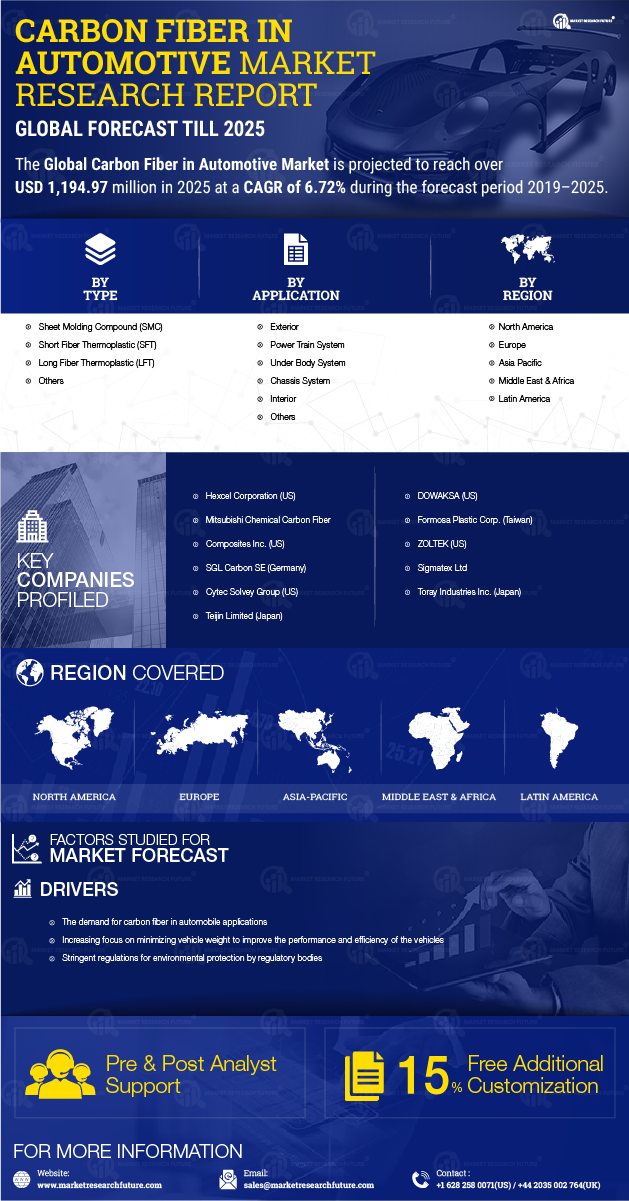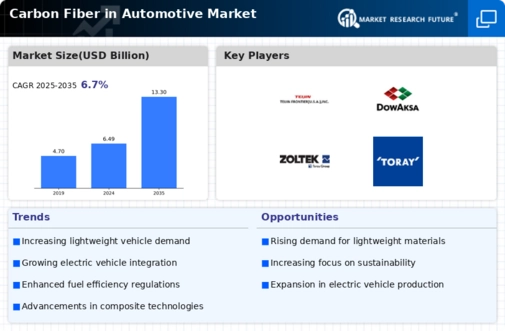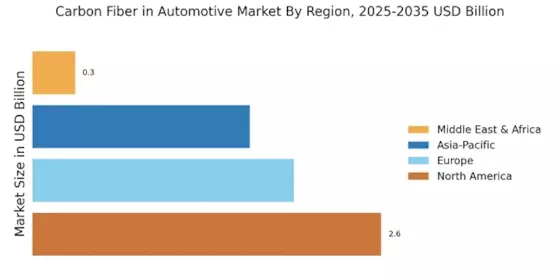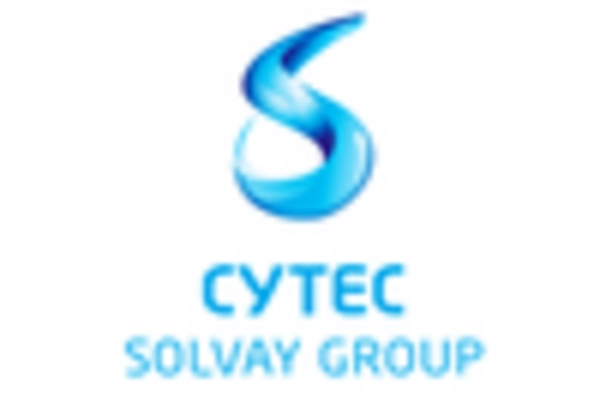Enhanced Safety Features
Safety remains a paramount concern in the automotive sector, and the Carbon Fiber in Automotive Market is poised to benefit from this focus. Carbon fiber's high strength-to-weight ratio contributes to the development of safer vehicles. The material can absorb and dissipate energy during collisions, thereby enhancing passenger protection. As manufacturers incorporate advanced safety features, the demand for carbon fiber components is likely to increase. For example, carbon fiber reinforced structures can be designed to withstand greater impact forces, which is crucial in meeting evolving safety standards. This trend suggests that the automotive industry will continue to invest in carbon fiber technologies to improve vehicle safety, thereby driving market growth.
Weight Reduction and Fuel Efficiency
The pursuit of weight reduction in vehicles is a primary driver in the Carbon Fiber in Automotive Market. Carbon fiber composites are significantly lighter than traditional materials such as steel and aluminum, which can lead to improved fuel efficiency. For instance, a reduction of 10% in vehicle weight can result in a fuel economy improvement of approximately 6-8%. As automotive manufacturers strive to meet stringent fuel economy regulations, the integration of carbon fiber becomes increasingly appealing. This trend is particularly pronounced in the production of electric vehicles, where every kilogram saved can enhance range and performance. Consequently, the demand for carbon fiber components is expected to rise, as automakers seek to balance performance with regulatory compliance.
Sustainability and Environmental Concerns
Sustainability is becoming a critical driver in the Carbon Fiber in Automotive Market. As consumers and manufacturers alike become more environmentally conscious, the demand for sustainable materials is on the rise. Carbon fiber, when produced using renewable resources or recycled materials, can significantly reduce the carbon footprint of vehicles. Furthermore, the lightweight nature of carbon fiber contributes to lower emissions during vehicle operation. The automotive industry is increasingly adopting life cycle assessments to evaluate the environmental impact of materials, and carbon fiber is often favored for its potential to enhance sustainability. This shift towards eco-friendly practices is likely to propel the adoption of carbon fiber in automotive applications.
Growing Demand for High-Performance Vehicles
The rising consumer interest in high-performance vehicles is a notable driver in the Carbon Fiber in Automotive Market. As automotive enthusiasts seek vehicles that offer superior speed, handling, and agility, manufacturers are increasingly turning to carbon fiber to meet these demands. The material's lightweight properties allow for enhanced acceleration and improved handling characteristics, making it a preferred choice for sports cars and luxury vehicles. Market data indicates that the performance vehicle segment is projected to grow at a robust rate, further fueling the demand for carbon fiber components. This trend suggests that as the market for high-performance vehicles expands, so too will the utilization of carbon fiber in automotive design and manufacturing.
Technological Innovations in Carbon Fiber Production
Technological advancements in the production of carbon fiber are driving the Carbon Fiber in Automotive Market forward. Innovations such as automated fiber placement and improved resin systems are enhancing the efficiency and cost-effectiveness of carbon fiber manufacturing. These advancements are making it feasible for automotive manufacturers to incorporate carbon fiber into mass production. For instance, the development of continuous carbon fiber processes has the potential to lower production costs significantly, making carbon fiber more accessible to a broader range of vehicles. As these technologies mature, the automotive industry is expected to see an increase in the use of carbon fiber components, thereby expanding market opportunities.


















Leave a Comment